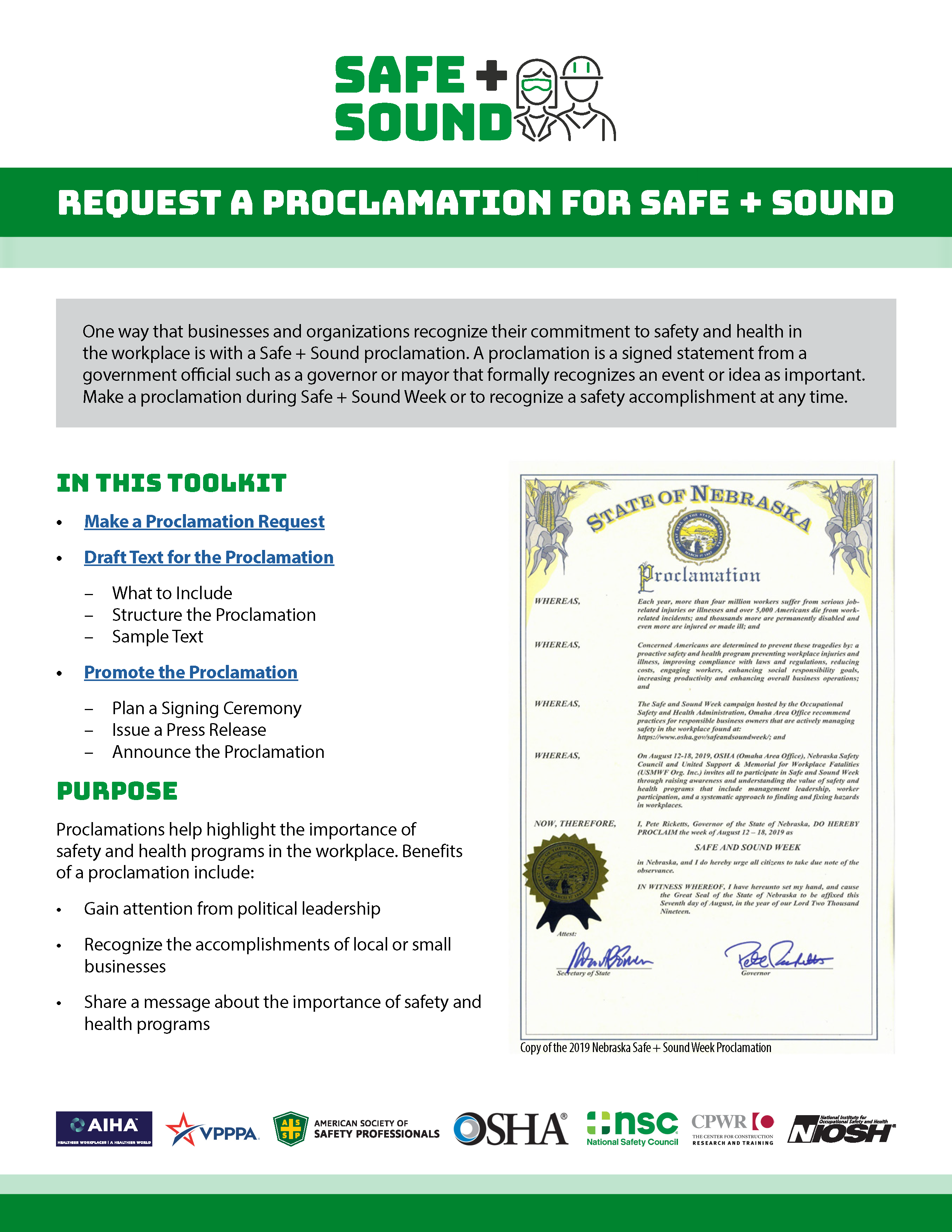Develop your Safety + Health Program
Why is it important?
According to the U.S. Bureau of Labor Statistics, the rate of worker deaths and reported injuries in the United States has decreased by more than 60 percent in the past four decades since the Occupational Safety and Health (OSH) Act was passed. However, every year, more than 5,000 workers are killed on the job (a rate of 14 per day), and more than 3.6 million suffer a serious job-related injury or illness.
Serious job-related injuries or illnesses don’t just hurt workers and their families but can hurt business in a variety of ways. Implementing a safety and health program, however, can improve small- and medium-sized businesses’ safety and health performance, save money, and improve competitiveness.
Safety and health programs help businesses:
- Prevent workplace injuries and illnesses
- Improve compliance with laws and regulations
- Reduce costs, including significant reductions in workers' compensation premiums
- Engage workers
- Enhance social responsibility goals
- Increase productivity and enhance overall business operations
Core Elements of a Workplace Safety and Health Program
Commit to implementing a program and use it to drive continuous improvement in safety and health.
Tap into workers’ collective experiences, knowledge, and insights in order to find solutions to workplace safety and health challenges.
Develop a systematic process for identifying and controlling (i.e., finding and fixing) workplace hazards.
Take a Safe + Sound Challenge

Challenges
Participate in challenges for each of the three core elements of a safety and health program.
























